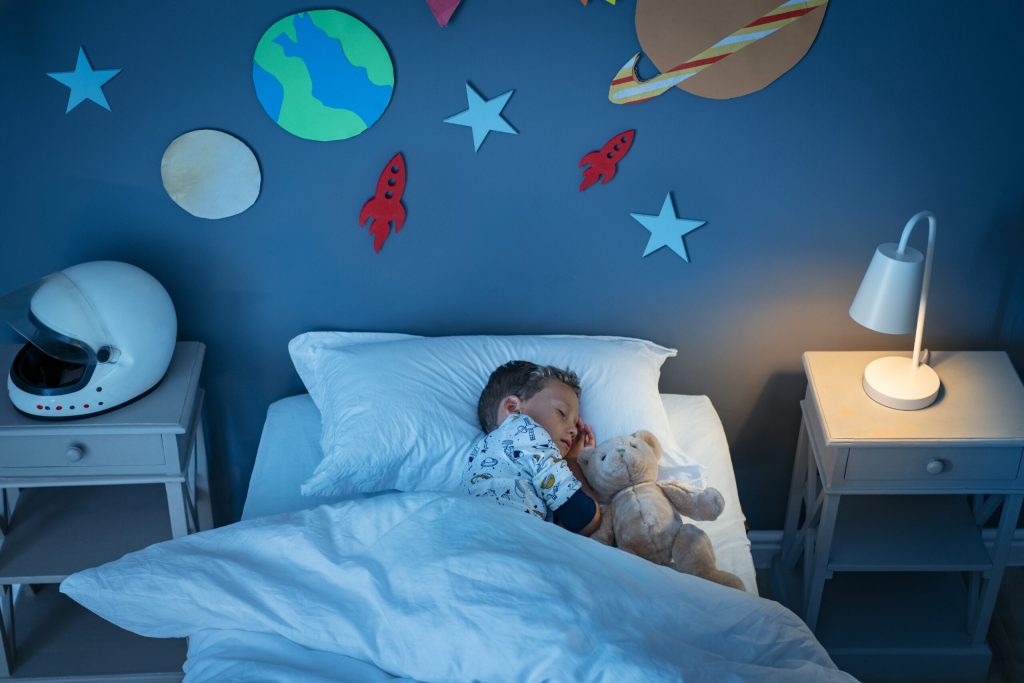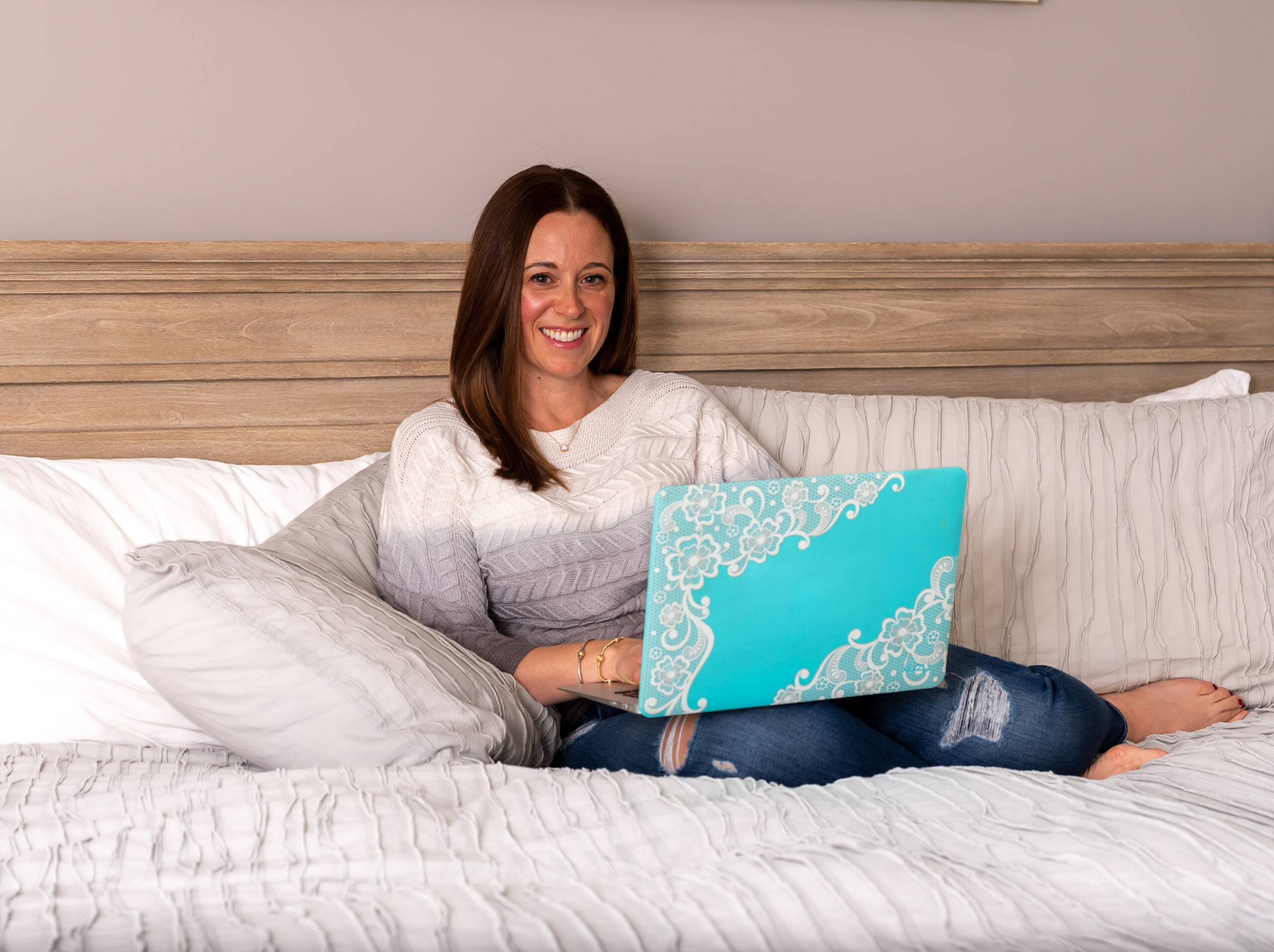
Helping Families Get the Sleep They Need: An Exercise in Trust
by Beth Christensen
Owner and founder of Happy Littles Sleep Consulting
When your toddler or young child struggles with sleep
While it’s common knowledge that infants and young babies wake up during the night for various reasons, many parents don’t know that sleep problems can persist or even resurface well into the toddler, preschool, school-aged years, and beyond.
Whether sleep is a new issue for your family, or your child has never slept through the night, at some point many parents decide that it’s time to prioritize sleep. This makes sense since the benefits of sleep are well documented for both adults and children alike. In addition, many parents start to become more aware of how much less happy, focused, and calm their kids are when they’re overtired.
An exercise in trust
So where do you start? Can you just let your toddler or older child “cry it out”? Maybe you used a gentler method to help teach your child to sleep when they were a baby. Does that work now? Can you just put them in their crib or bed and leave the room while they cry themselves to sleep?
I mean, you could, but I challenge you to think about teaching your toddler or younger child to sleep in a way that allows them to be rested and healthy as an exercise in trust. This exercise can be transposed to future issues that challenge your parenting boundaries and sleep is a great place to start.
Meet your child with the connection they’re seeking at bedtime and then work on empowering them to be able to sleep on their own safely and securely with you in the next room. Here are 7 tips on how to improve your family’s sleep, keeping trust and connection as your main focus:
1. Get the timing right
It’s crucial that you have the timing of sleep just right. You want to ensure that your child is neither over nor under tired at bedtime so that you know you aren’t asking their body to do something it’s not physiologically capable of doing at that time.
Starting around 2 years of age, most children need 6 hours or more between the end of their nap and bedtime. If the nap is too long or too late and bedtime is too early it will make it that much harder for their bodies to calm down, rest, and go to sleep. Often times we find this scheduling issue to be the culprit. However, it’s rare that simply fixing the timing solves all of your sleep problems. This is because children develop behaviors in response to having a hard time falling asleep.
2. Bedtime boundaries and the inner work
Once you’ve fixed the timing, if the behaviors persist, it’s time to think about what boundaries around sleep are important to your family.
Our children want to know that we are their leaders and that they can trust us to guide them through life. Whether or not they like our boundaries there is great comfort in knowing they can depend on us to follow through. If we say that they can eat ice cream for dinner, they want to know we won’t change our minds when it’s time for dinner. If we say we won’t have time for a visit to the park if we can’t pick up our toys quickly, and then they still don’t pick up their toys, but we go to the park anyway, that is confusing.
I have families fill out a “family narrative worksheet” to help them get clear on their values and boundaries when it comes to sleep. If we know that all family members need sleep in order to be their happiest and healthiest selves, and we also know that when our young ones sleep in our bed that at least one family member isn’t able to get that necessary sleep, our boundaries start to feel a little more important!
Not only that, but we start to see that helping our child get enough sleep is fundamentally a need of the child. Yes, parents NEED their child to sleep but more importantly the child needs that sleep to function successfully in life!
And this isn’t to say that some families can’t sleep great in a shared bed. I’m just here for the families who have identified that their health is suffering because their sleep boundaries aren’t being respected. What your sleep boundaries are is completely up to you!
3. Family sleep rules
So now that we’re clear on our sleep boundaries we can make some sleep rules for the whole family. Some of my favorites are:
- When it’s time to sleep we rest our bodies, close our eyes, and stay in our beds until it’s time to wake up in the morning.
- We don’t wake other sleeping people.
Again, your rules, your business, but it’s important to have some. When the rules are clear, it’s much easier for children to follow them. If you have rules that aren’t being followed, it’s probably time to revise them and/or get more clear on your family sleep narrative.
4. Pick a sleep training method
The next step is to find a method to teach your child to fall asleep and stay asleep all on their own. There are many methods, some backed by research for younger babies but less so for older children. I have found success using a variety of approaches but the one thing that resounds is that consistency is king. Pick a method that you know you’ll be able to follow.
Learn more about the next 3 steps to put trust and connection at the heart of your young child’s bedtime routine and sleep habits here.
 Beth Christensen is the owner and founder of Happy Littles Sleep Consulting. Through her business she has enjoyed helping hundreds of families with babies and children through the age of 5 years old make improvements to their health and wellness by helping them sleep!
Beth Christensen is the owner and founder of Happy Littles Sleep Consulting. Through her business she has enjoyed helping hundreds of families with babies and children through the age of 5 years old make improvements to their health and wellness by helping them sleep!
Beth’s fascination with the art and science of sleep sparked when she found out she was having twins in 2013. She read every book she could get her hands on, fearful that she would never sleep through the night again! Her twin boys were born in 2014 and she began to put some of her methods to the test. She received her certification in 2017 from the Family Sleep Institute and began Happy Littles Sleep Consulting right away while continuing to work as a Doctor of Physical Therapy at Beth Israel Hospital in Boston. In 2018 her husband Adam’s job brought the entire family to North Barrington. She is involved with fundraising on the North Barrington School PTO Board and is an active member of Barrington Women in Business. In her free time, she enjoys working out at Burn Boot Camp, cooking, watching her twin boys Charlie and Henry play baseball, traveling, and is an aspiring golfer. To learn more about Beth and Happy Littles Sleep Consulting you can visit her website here.
